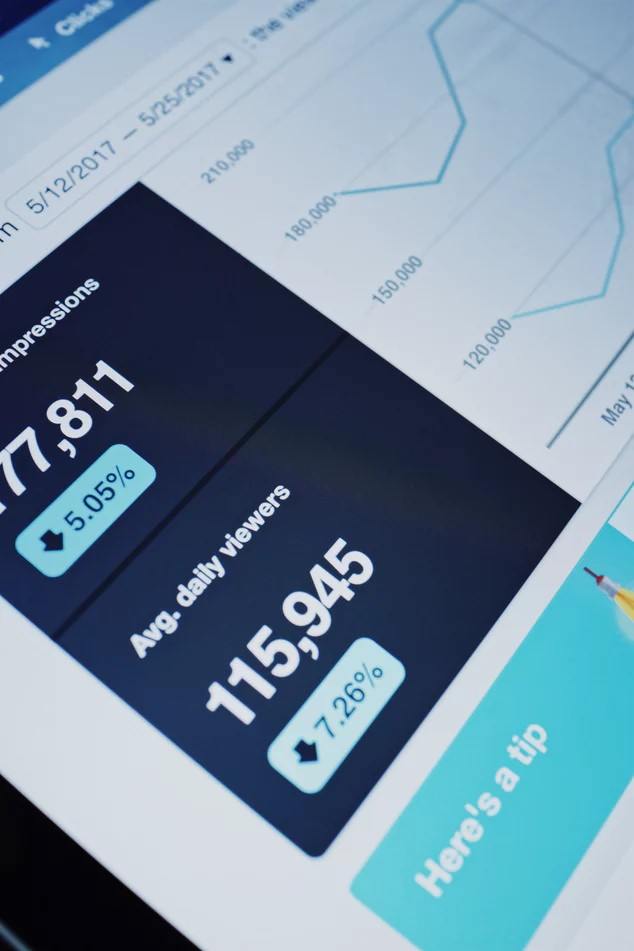One of the most common questions we get asked is, “How often should I redesign my website?” However, that’s usually only if the organization for which you work even understands that regular site redesigns are necessary, given all of Google’s constant algorithm updates.
It’s hard to believe, but even in 2018, there are still many businesses that don’t understand that consistent site redesigns mean the difference between your site getting found on the web…and slowly slipping into Internet obscurity!
The answer to how often should I redesign my website is easier and more straightforward than you may expect. With a little bit of analytics monitoring and recognizing what your key performance indicators (KPIs) are telling you, you’ll have the answer in no time.
The Thinking Behind Website Redesigns
Your website is your business’ best salesperson—or, at least, it should be, in theory. It’s a 24-hour advertisement for your brand that never goes to sleep and never stops selling, if you optimize it properly, which includes:
- SEO (keywords, meta tags and descriptions, etc.)
- Great design (user experience, usability, navigation)
- Inbound marketing to bring traffic (blogging, social media, link-building campaigns, etc.)
- On-page conversion rate optimization

The sad thing is that, unfortunately, all these optimizations never, ever last for a long time! That’s the gritty reality behind your site: It’s only as good as the last time you optimized it because nothing lasts forever:
- Your keywords may change
- Design fads/trends will change
- Traffic from certain sources may experience friction or dry up altogether
- On-page user flows will always change
As you may begin to see, when all of these factors upon which your initial site optimization is dependent…are so susceptible to change, then your site optimization is never permanently guaranteed. And that’s exactly why you need to consistently redesign your site.
The Reason Behind Website Redesigns
If you’re working on a team where consistent redesigns are already the norm, then you’re in good shape. If your boss already understands the crucial, bottom-line value of redesigns for your business, then more power to you. You don’t have to convince anyone in your organization of their essential necessity.
Sadly, many organizations still don’t appreciate the crucial need for consistent redesigns, so we’ll try to make the persuasive case for it here.
When your site optimization falters, your site performance suffers. When this occurs, it’s like a domino effect of negative things for your site:
- Site visitors (leads, customers, etc.) can’t find what they’re looking for on your site (or can’t find your site as easily on the SERPs) and get annoyed
- Traffic decreases
- Conversions drop
- Sales drop
- Revenue drops
Bottom line: When your site makes things difficult for your users and customers, then you’re in trouble.
And that’s why you need constant redesigns: Because your site performance will never be consistently great, so you have to keep making adjustments to your site in the form of these redesigns…to ensure that your performance stays top-notch and actually optimized.

The big and successful businesses and companies already undertake these redesigns on a regular basis because they know how much traffic and money is at stake to their bottom line.
To wit, UX Myths reports that the big players in the tech industry follow this strategy with much success:
“For a redesign (or realign) to be effective, it must stem from the understanding of what does and doesn’t work on the current website, and how user needs have changed since the last redesign. In most cases, it is sufficient to make minor changes in the user interface. Google, Yahoo, Amazon and a bunch of others follow this strategy with great success: you can hardly see significant changes on their websites though they’re perfecting their design constantly.”
If these successful companies understand the necessity and value of doing constant redesigns, albeit minor ones, then so should you and your business!
Radical Redesign Versus Minor, Constant Redesigns
Redesigns must not happen willy-nilly. That’s a recipe for disaster, no matter how well-intentioned the effort is. To seriously answer the question, How often should I redesign my website? you need to monitor your site analytics and keep track of KPIs to make an informed decision.
When both are telling you that your site performance is declining, then it’s time for a redesign. Note that, in some cases, redesigns don’t have to be huge or site-wide. Sometimes, you just want to redesign a page or an element of a page or pages to get back the performance that was lost.

It’s important to know everything you’re getting into before doing a full or radical redesign, which is where you make huge changes all in one, fell swoop. The usability experts at the Nielsen Norman Group specifically advise businesses to take several factors into consideration before doing major overhauls of your site, writing:
“Drastic website changes are jarring for users and risky for businesses. The cost and effort of getting an entire organization and senior stakeholders to agree on the new website is enormous. Organizations often launch a redesign project with an ambitious timeline, only to see it get stretched and stretched by endless debate. Some projects start and stop multiple times, while other projects fizzle completely. Teams start out excited, but soon become miserable.”
However, and this is very important, that’s not to say that full redesigns are bad or should never be attempted. Designing and developing a new site from scratch is entirely appropriate…when the right conditions exist. As the Nielsen Norman Group further explains:
“Extensive changes are risky and generally should be avoided. However, good reasons exist for a major site overhaul at rare occasions. If the issues go beyond aesthetics or the problems are glaring and no longer can be remedied with band-aid fixes, sometimes it’s best to rip off the bandage and fix the problems.”
Therefore, a full redesign is entirely appropriate if a business needs an entirely new site or if an existing site is so problem-wracked that a complete, radical redesign is the best solution.
What to Monitor to Guide Your Redesigns
The incremental redesign iterations that the Nielsen Norman Group mentioned in their report should be the result of consulting site analytics and KPIs.
Here are several, potential analytics to watch:
- Traffic levels to your site
- Sources sending traffic to your site
- Your bounce rate (NOTE: good opportunity to use “bounce rate” here as the anchor text to internally link to the earlier piece on keeping your bounce rate low!)
- Time spent on a particular page/interactions
- Your conversion rate(s)
- Average session duration
- Exit pages
- Number of page views
Let’s look at an example of how these metrics should influence an incremental (not radical) redesign.

Scenario: Session duration and time spent on a sales/landing page are way down. That’s resulted in a drop in conversions.
Analysis: After looking at user/customer feedback and conducting some user testing, you realize the page and user flows on the page in question aren’t clear. This has resulted in more users failing to understand what the call to action button is all about and, therefore, failing to click or tap on it.
Solution: The redesign needs to focus on addressing the lack of clarity of the page and user flows to make clear that the only page goal is to click or tap on the call to action button.
On the KPI front, always monitoring your key performance indicators can also give important information about what to tackle in a redesign.
Scenario: There’s a sudden drop in traffic that doesn’t reverse itself after a few days or weeks. In other words, it’s a permanent loss in traffic.
Analysis: After checking your analytics, you notice a drop in traffic from one source in particular: mobile. Such a scenario actually occurred a few years ago when Google rolled out its so-called “Mobile-Friendly Update,” which resulted in “mobilegeddon” for many sites with poor mobile optimization.
Solution: Ensure that your pages are mobile-friendly in the first place by using tools like Google’s Mobile-Friendly Test. Then, get your design and UX teams together to implement the changes to bring your pages up to Google’s new standards.
Being very meticulous in this fashion about tracking how your site is doing will go a long way toward giving you accurate data about answering, How often should I redesign my website?
Heatmaps to Help You Understand User and Visitor Behavior
Google Analytics is definitely where you should start to track and analyze your site metrics. It’s accessible and easy to use.
If you are looking for a little bit deeper data, though, you can always use heatmapping tools. These are tools that provide a graphical and visual representation of your site data to expose specific user behavior on pages or sections of pages. In short, these tools give you additional information that site analytics won’t, such as:
- Where users have clicked on a page
- What elements on a page they look at first after landing on the page
- How far they scroll down a page

Needless to say, armed with this more specific data, you can redesign your site to greater specificity to ensure better site performance and, as a result, a higher conversion rate.
Popular heatmapping tools include:
Answering How Often Should I Redesign My Website?
The answer’s clear: You should redesign your site when your analytics and KPIs are telling you that your site performance is faltering. That’s why monitoring your site metrics is vital to your success. The bottom line is that you’ll always need to do a redesign; the timing and frequency can vary greatly, however.
Depending on a host of factors beyond your control, your next redesign may be months down the road. If there’s a particularly nasty Google algorithm update that throws your traffic sources into disarray, then there’s immediate urgency for a redesign!
Remember the most important thing when asking yourself, how often should I redesign my website? You must always monitor and test your site on a regular basis to stay on top of your analytics, so that you always know the optimal time to do an incremental redesign.